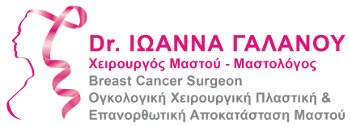Heredity
Almost 13% of breast cancers are due to a hereditary predisposition associated with high or moderate penetrance of genes. The 2 genes most responsible for breast cancer are the BRCA1 gene on chromosome 17 and the BRCA2 gene on chromosome 13. Mutations in these genes place a high risk of developing breast cancer or ovarian cancer. Gene mutations in the BRCA2 gene are responsible for the increased risk of male breast cancer. Other genes thought to be responsible for a 1.5-7.5 greater risk of developing breast cancer compared to the general population are CHEK2, BRIP1, MSH6, BARD1,ATM, RAD51D and PALB2.
The risk of developing breast and ovarian cancer in 80-year-old women with BRCA1 and BRCA2 mutations are listed in the table below (Kuchenbaecker KB, PEOPLE 2017) (3)
(3) (Kuchenbaecker KB, JAMA 2017)
| MUTATION BRCA1 | MUTATION BRCA2 | |
| BREAST CANCER RISK | 72% | 69% |
| OVARIAN CANCER RISK | 44% | 17% |
There are 4 levels of risk for breast or ovarian cancer:
Low
Moderate
High with no confirmed genetic mutation
High with confirmed genetic mutation
CRITERIA FOR ONCOLOGICAL GENETIC TESTING
Oncological genetic testing is necessary when the woman has at least 1 of the following criteria:
Personal or family history
- A mutation in one of these genes (BRCA1, BRCA2, P53,PTEN etc)
- Man with breast cancer
- Woman with breast and ovarian cancer
- Woman with breast cancer ˂ 36 years old
- Woman with triple negative breast at age ˂60 years
- Woman with high-grade serous ovarian cancer at any age
- Woman with bilateral breast cancer ˂50 years old
- A 50-year-old woman with breast cancer and at least 1 first-degree relative with:
• Breast cancer ˂50 years old
• Ovarian cancerborderlineat any age
• Bilateral breast cancer
• Breast cancer in a man - A woman with breast cancer ˃50 years of age and a family history of breast or ovarian cancer in 2 or more first-degree relatives (one of whom must be first-degree with her).
- A woman with ovarian cancer and at least 1 first-degree relative
degree with
• Breast cancer 50 years old
• Ovarian cancer at any age
• Bilateral breast cancer
• Breast cancer in men
First degree of kinship (parents, siblings, children) with the specific characteristics. On the father’s side, we must also take into account second-degree relatives (grandmother, aunt).
The genetic test should be done in principle on the family member who had the cancer. The test results can be the following:
• Finding the gene mutation
• Failure to find a gene mutation without excluding its presence, or finding a mutation of uncertain significance that we cannot speak of a risk.In case of finding the gene mutation, the genetic test could also be carried out by the other family members from the age of 18 and over. In the case of a mutation of uncertain significance, there is no need for family members to proceed with genetic testing, except for research purposes.
